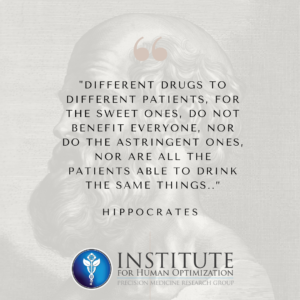As we have learned throughout the Cell Membrane Series, Omega 3 (n-3) fatty acids are important in human nutrition. Specifically, because these are essential fats that the human body cannot make on its own. N-3 fatty acids are integral structural components of the cellular membranes of tissues throughout the human body necessary from conception and throughout the entirety of our lives.
Most of us have heard the term “good fats” and “bad fats”. Not all fats are created equal and some even have anti-inflammatory properties while others have pro-inflammatory properties. “Bad fats” usually refer to omega-6 fatty acids that promote inflammation in the membrane phospholipids of cells. While inflammation plays a key role in the healing process, chronic inflammation contributes to tissue damage, aging, and disease.
What makes essential fatty acids essential?
Fatty acids are the building blocks of the fat in our bodies and in the food we eat. While the human body can produce most of the fats it needs, it cannot produce Omega-3 fatty acids. This means that the body must obtain them through the foods we eat. In our last blog, we took a dive into N-3 Fatty acids which are necessary for cell growth and preservation, providing energy and forming important components of cell membranes.
The three main omega-3s are
- Eicosapentaenoic acid (EPA)
- docosahexaenoic acid (DHA
- Alpha-linolenic acid (ALA)
EPA
Primarily found in seafood such as salmon, shrimp, and algae. EPA is used by the body to produce signaling molecules and play a role in anti-inflammatory processes. Prescription EPA is used to reduce triglyceride levels.
DHA
Similarly to EPA, it is also primarily found in seafood. DHA is an integral structural component of your skin and retina. The human retina is well known for its unique lipid profiles and not having sufficient fatty acids results in decreased vision and compromises the integrity of the retina. Additionally, studies have shown the impact that DHA has is protective against retinal diseases. DHA is also important for brain development. The developing brain needs sufficient DHA for optimal visual, cognitive development, and brain function.
ALA
ALA is the most commonly found omega-3 fatty acid in our diet. Several plants contain ALA such as flaxseeds, chia seeds, hemp seeds, flaxseed oil, and walnuts.
Omega 3s and Disease
Omega 3 fatty acids support and modulate numerous molecular and cellular mechanisms especially in the retina, brain, and in inflammatory reactions. Omega 3 fatty acids support molecules that perform critical signaling between cells. Omega 3 fatty acids modulate membrane fluidity that is essential for the proper functioning of the tissues in the retina, brain, etc.
Coronary Disease
Large-scale epidemiologic studies suggest that people at risk for coronary heart disease can benefit from adding omega-3 fatty acids to their daily diet. How?
Omega 3s reduce coronary heart disease by:
- decreasing risk for arrhythmias
- decrease triglyceride and remnant lipoprotein levels.
- decrease rate of growth of the atherosclerotic plaque.
- (slightly) lower blood pressure.
- reduce inflammatory responses
- And more!
Omega-3s are essential fatty acids that you get from food or supplements that help build and support a healthy body. Fatty acids play a role in cardiovascular, neurologic, and other diseases due to their mechanisms at a cellular level. They’re key to the structure of every cell wall you have. They’re also an energy source and help keep your body working the way they should.
Disclaimer: Talk to your Physician before taking a supplement first. They may have specific recommendations or warnings, depending on your health and the other medicines you take.
More about The Institute for Human Optimization
At the Institute for Human Optimization, we are committed to helping you create a personalized plan for living your longest, healthiest life possible. My team and I leverage the most cutting-edge advances in genetic testing, nutritional analysis, and functional medicine to get to the root biological imbalances that cause aging.
The Institute for Human Optimization was created with the intention of pursuing a highly personalized approach to longevity medicine to help enhance healthspan. Where lifespan is the actual number of years we’re alive, healthspan is how many of those years are spent in health and wellness.
We believe that a long healthspan – not just a long lifespan – is the most important thing you can cultivate. A long healthspan means you don’t miss out on life as you get older. It means remaining independent and having the vitality to travel and see the world. A long healthspan means that you can be there – in full body and mind – for the people who need you the most and that every day will feel like a gift.
We know that each person is truly unique. From DNA to iris, we all possess a blueprint that is genetically inherited and environmentally influenced. By gaining a deeper appreciation for the person on a molecular level and addressing the root causes driving disease, we can help promote optimized health through our unique scientific, N of 1, approach to individualized care.
The Institute for Human Optimization provides the most comprehensive, data-driven, personalized approach to wellness. It is:
· Predictive – We use genomics and advanced biomarker testing to risk stratification and empowerment.
· Personalized – We use data-driven health information to curate actionable change for disease mitigation and prevention.
· Preventive – We utilize highly individualized programs tailored to your unique genomic blueprint.
· Participatory – We empower engagement in personal choices, which allows for improved outcomes and enhanced results.
I am so excited about the possibility to support you on this cutting-edge journey to extend your lifespan AND your healthspan. Click here to schedule Your Longevity Equation Epigenetic Consult! Can’t wait to meet you!




